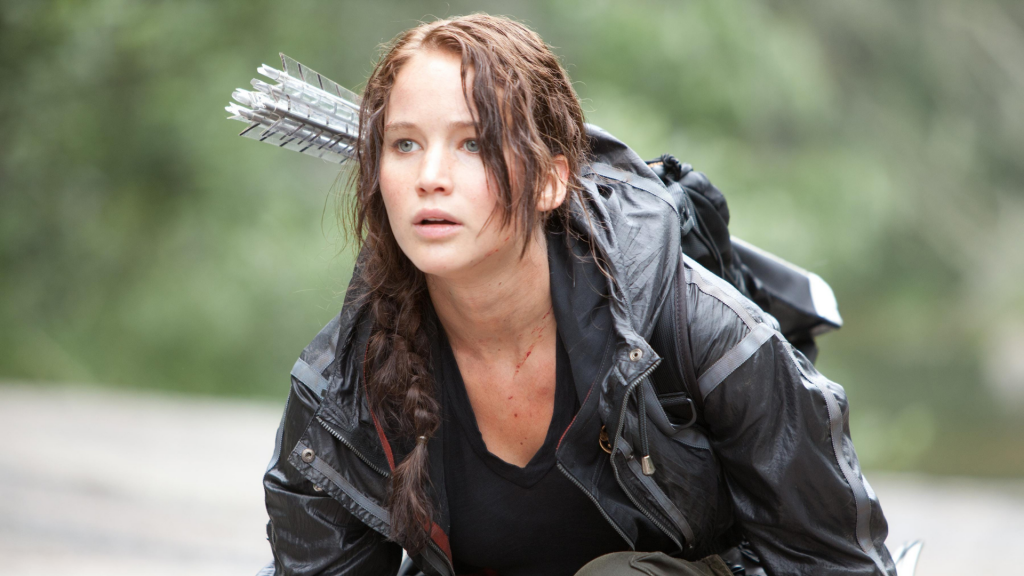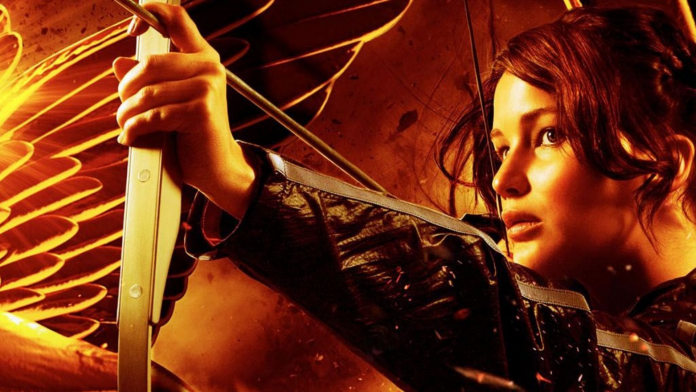Suzanne Collins’ dystopian trilogy is a famed book series showcasing Katniss Everdeen’s journey as a participant in the 74th Hunger Games. So, when it was optioned for film, their was a ready-made fanbase ready to love or hate the adaption.
The Hunger Games proved a unique option to bring to the big screens. With violence, teenagers and the post-apocalyptic world of Panem, it was unlike any other major blockbuster series. It reflected changes in the types of content being targeted at young adults, including having a female protagonist leading the cast, and it went down a storm. The exhibitions, a spin-off novel, and a full-blown documentary detailing the making of the film all confirm The Hunger Games‘ popularity. This film led the way in 2012, and on it’s heels were the likes of The Maze Runner, Divergent, The Fifth Wave, and even the more recent The Darkest Minds. Similarly, these book adaptions showcase teens overcoming and revolting against a governing body in a parallel world. Yet, there success rate never reached that of The Hunger Games (both critically and at the box office). The film hardly started the dystopian genre, nor did its climax mark it coming to an end, but nevertheless The Hunger Games proves provocative, gritter films focusing on a young adult’s bid for agency remains a compelling visual narrative.

The Hunger Games is known for its portrayal of a totalitarian, dystopian government who harness and exploit their power over twelve districts after a rebellion. As punishment, they bid each district to choose one boy and girl between 12-18 years old to participate in the annual Hunger Games—a fight to the death. Though the synopsis cannot capture the gore and harshness exuded within Collins novel, Gary Ross’ directing manages to. The use of a shaky cam encompasses his aim of realness in portraying violence, yet as a co-writer he also captures the quieter, prolonged moments of survival within the film—ones which cannot be captured with such clarity in the book.
In a bid to achieve a 12A rating in the UK, blood and sound were cut from many fight scenes, but the film still manages to have the desired bleak, dark tone. Rather than the glorification that comes with CGI gore, to the demise of countless lesser films, it shows a more contained version without losing the brutality reflected in the story. The Hunger Games proves to be an artistic delight for filmmakers that packs a powerful punch with teens and adults alike. Within the first minute of the Games, where several tributes fight for supplies and cut other tributes down, it is clear that the film remains true to the novel’s purpose; to shock and to provoke. By not underestimating their young audience, The Hunger Games was able to thrive.
The first novel and film showcase Katniss (played by Jennifer Lawrence) as an individual caught amidst the suffering of her post-apocalyptic world. It is her lack of forethought, with decisions driven solely by what feels right, that make her such an admirable main character. Volunteering for her sister, forming friendships within an arena designed to force brutality and isolation, and saving Peeta are just some of the mini-revolts that she uses to push back against the Capitol. Being the girl on fire helped ignite her as the face of the rebellion, but seeing her sacrifices and survival play out on the big screen resulted in the fanaticism behind The Hunger Games increasing dramatically. Katniss remains the stoic survivor and loving sister audiences could connect with.
The storyline is empowering. Katniss fights for herself but also advocates for others in the Games, like Rue (Amandla Steinfeld) and Peeta (Josh Hutcherson). Lawrence’s performance paved the way for a young woman to be both vulnerable in her willingness to seek friends, and brutal in her effectiveness at staying alive and sacrificing for her family. The complexity shown in the books can be seen on screen, and for those eager to see the multi-faceted world Collins had created, they were not disappointed. Elizabeth Banks as Effie brings new life to a character most consider the epitome of the Capitol’s selfishness. The costume department and her own nuanced performance make for one of the most colourful representations of the book’s finer details. As well as Woody Harrelson and Lenny Kravitz in mentorship positions to Katniss as Haymitch and Cinna respectfully, Donald Sutherland effortlessly revels in his villainous role as President Snow (the ruler of the governing body). The casting secured a successful debut for the world of Panem. Unlike the more CGI-dependent follow-ups and its dystopian’ successors, The Hunger Games focuses on those connections between characters, dismissing intense visual assaults for minimal speech so an audience can absorb the newness of the world and its unfamiliar elements (like Katniss’ own experiences with the Capitol). The Hunger Games is a dystopia that at once captures both the familiar and foreign parts of the world, something many comparable films have not achieved anywhere near as well.
The Hunger Games manages to capture the best elements of Collins’ book by adapting it in such a way as to emphasise those elements that feed the story. Rue’s song for instance can be captured in all its audio delight, something that people could only guess at before. The nature of Katniss’s tracking, for which many had no clue, to the structure of the Games room (which CGI managed to accomplish much of) all bring the world to life in all its accuracy, without cushioning the display of violence for fans of the book. You also cannot help but compare the portrayal of the Capitol, with its glamour and often quirky clothing (closely akin to costume) and its greyscale modernity,to the forestry and cramped housing of District 12. The Hunger Games emphasises that this titanic visual and cultural distinction between the two captures the immense injustice of this world, even before Katniss defies Capitol rule in the Games.
The Hunger Games felt like a refreshingly different type of blockbuster film. It captured the hearts of book fans and new audiences alike in spurring the new generation of dystopian genre films into action. It led to a successful franchise that spurred three more films—albeit not by the same director as the first. Yet, it is the first film that will will always remain a textbook example of how to bring popular science fiction stories to the big screen.
Words by Annabel Smith
Support The Indiependent
We’re trying to raise £200 a month to help cover our operational costs. This includes our ‘Writer of the Month’ awards, where we recognise the amazing work produced by our contributor team. If you’ve enjoyed reading our site, we’d really appreciate it if you could donate to The Indiependent. Whether you can give £1 or £10, you’d be making a huge difference to our small team.
